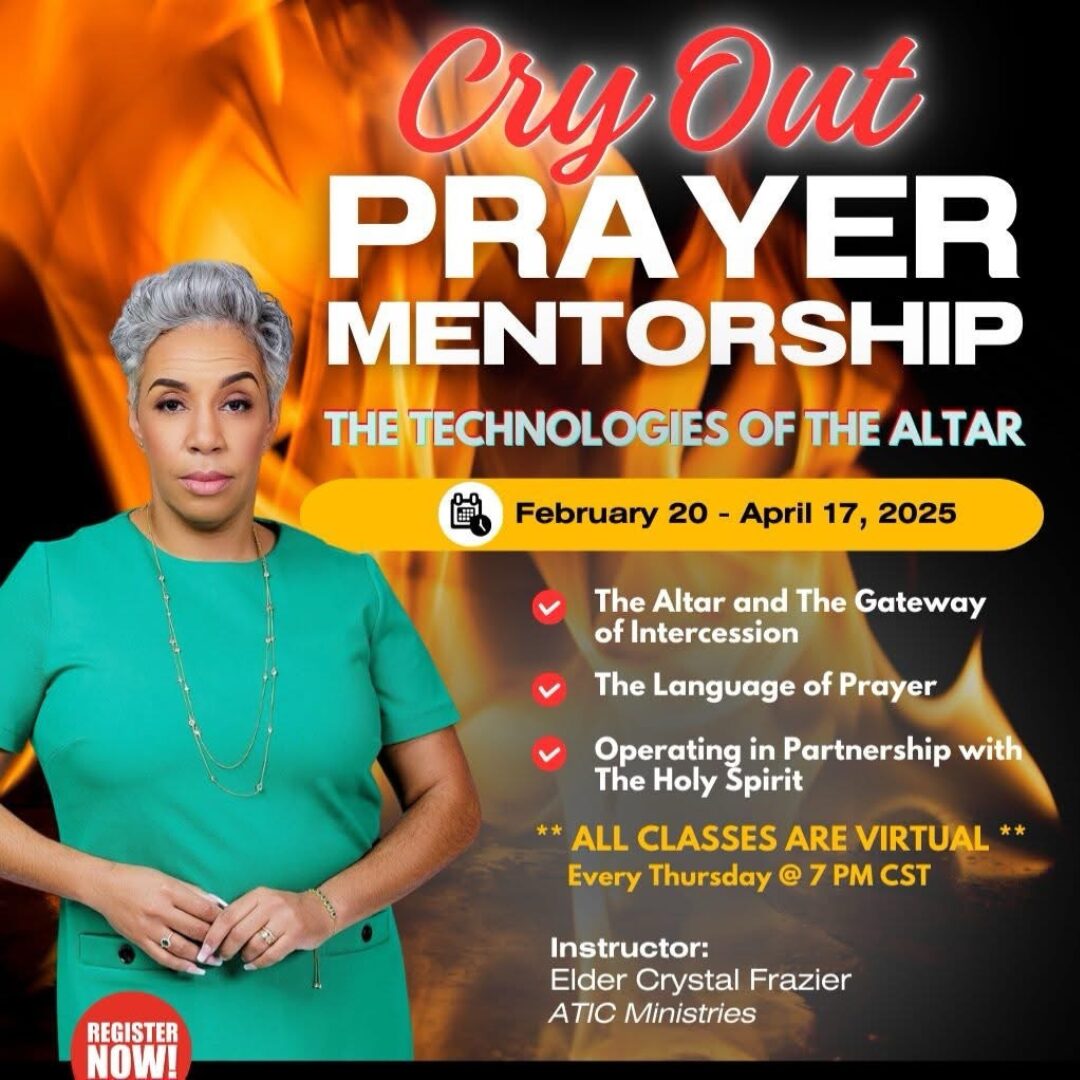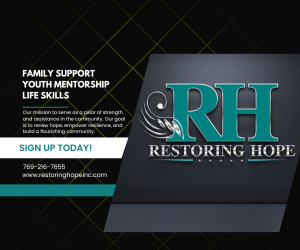You’re listening to Radio Health Journal, the trusted news source for medicine, science and
technology. I’m Elizabeth Westfield. I’m Mayan Vastabetancourt.
And I’m Greg Johnson. This week, how can we reduce severe injury in young athletes? Kiddos
are seeing injuries because of more repetitive actions and higher risk motions that they’re just
doing again and again and again, as opposed to having the opportunity to diversify. But first,
everything you need to know about dementia.
There are many, many studies that show correlations between more exercise, less dementia. I
would say doing crossword puzzles in Sudoku, probably not. All that and more this week on
Radio Health Journal.
Summer’s here. Get ready for backyard barbecues, trips to the pool and COVID-19? That’s right.
COVID isn’t taken this summer off and can actually spread year round.
I’m Dr. Simone Wiles, and as an infectious disease expert, I know my patients are often
surprised by this fact. They don’t expect COVID to strike in the summer and derail their plans,
but guess what? It can. COVID can be unpredictable and quickly turn serious, especially for
those who are 50 plus or have certain underlying medical conditions.
The good news is, is that if you start feeling sick or test positive, you don’t need to wait it out.
Prescription medications exist to treat COVID for certain people. If you catch COVID this
summer, don’t delay.
Ask your doctor if prescription medication is right for you. Learn more at PfizerForAll.com slash
COVID-19. This message is sponsored by Pfizer.
When we’re young, the idea of monsters under our beds is the biggest fear we can imagine.
But as many of us age, that fear begins to take a different shape. One that we can’t fight with
our fists.
One that’s wrapped up in deceptively calm words delivered by a white coat in a sterile room.
Dementia. It’s this fear that drives many people to keep their heads in the sand, pushing
forward with life as normal and ignoring their diagnosis.
Dr. Peter Rabins, Professor Emeritus in the Departments of Psychiatry and Medicine at the
Johns Hopkins School of Medicine, says since so many different diseases can cause dementia,
it’s important to parse out which one is the culprit to get the best treatment. Because there is
treatment. Somewhere around one or two percent of people who have dementia have a totally
treatable disease.
For example, low thyroid, very low vitamin B12. There are a number of medical treatable
diseases that have dementia as one of their symptoms, particularly if they go on long enough.
So having a thorough evaluation is important.
Rabins is the author of Is It Alzheimer’s? 101 Answers to Your Most Pressing Questions About
Memory Loss and Dementia, Second Edition. His mission is to inform and empower both
patients and caregivers to optimize their quality of life, no matter which state of the disease
progression they’re dealing with. Which is why Rabins believes it’s so important for patients to
fully understand their condition, even if they’re not part of the small percentage with a curable
condition.
When we get a more specific diagnosis, that tells us something about the here and now, what
are the problems the person’s having, but also what’s likely to happen in the future. And also
about what might help the person function better and have a better quality of life. I mean, I will
say that many of, if you put aside the biological treatments, many of the principles of care are
the same, whether it’s Alzheimer’s or Parkinson’s dementia or Lewy body dementia.
But having a specific diagnosis can help. While each disease provides its own challenges, Rabins
says the goal is always to maximize the person’s quality of life. This looks different as the
condition progresses, but big impacts can be made even when someone’s in the more
advanced stages.
Pain, for example, is hard to notice in dementia patients, so being aware of the signs can make
a world of difference for these people. Many people lose the ability to speak or to use language,
so they can’t say, I’m in pain. Now, they may be crying or when you touch them, they may
cringe.
So there are markers that somebody is in pain, but you have to be looking for it. And someone
who can’t tell you it hurts. And of course, if you have a memory problem, even if you can speak,
you may not remember that a half an hour ago you were in a lot of pain and for some reason
things are better now.
So that’s a big one. It does appear that treating depression when people are severely ill, that
can help some people. Keeping people maximally functional from a physical therapy point of
view seems to be associated with a better quality of life, even an advanced disease.
Learning what triggers someone to be upset can help avoid these unpleasant situations
altogether. And once you get to know somebody, even at the late stage of the disease, you
learn what triggers them, or you see that they’re starting to get upset, stop doing it, even if it’s
quote, to help them. So there are lots of care things like that, that you can do that also improve
quality of life, even at the end of the disease.
And we treat sick people somewhat differently than we do, whether it’s cancer or heart disease
or dementia. But understanding that the person has a disease that affects their thinking, I think
is important Because then you start using common sense and trial and error. So if there are
problems, how do you solve those? And when you do that, you make life better for everybody.
And though a majority of cases are not curable, Rabin says there are some exciting
advancements that have come out in the last few years. The first are blood tests that physicians
will be able to use to diagnose patients in addition to the brain scans that are currently used.
That’s a huge advance, partly because when doctors could only diagnose by symptoms, we
were wrong from 10 to 30 percent of the time.
And whether it was Alzheimer’s disease or some other cause of dementia. Though they are
currently made for people with Alzheimer’s disease, Rabin’s believes that the same strategies
will soon be able to diagnose other conditions as well. Along with the blood tests, there have
been two medications approved to treat the disease, but they aren’t yet able to make a
dramatic difference.
Currently, patients taking these drugs see about a 7 percent improvement. And though it’s a
modest change, Rabin says for these people and their families, it’s a noticeable difference. It’s
as if we’re at the dawn of a treatment era.
I like to think of it compared to cancer treatment. This is like 1960 when we were just starting to
have medicines that help people live a little bit longer. So we need to have lots of progress and
not better medicines, but probably different kinds of medicine.
In other words, medicines that work differently. And you know, it took a long time to figure out
in cancer. For many cancers, you need three or four medicines.
And somehow that combination is much better than any one alone. So it may be a combination
of these medicines and other new ones that target different aspects of the disease. So it’s a
start.
While we wait for these breakthroughs in drug development, there are other ways for people to
increase their quality of life when living with dementia. The first is getting an early diagnosis.
You may be wondering how to tell the difference between dementia and age-related memory
issues, but Rabin says it’s a much more clear drop-off than most assume.
For example, when given a list of words, a healthy young person can remember about one
extra word than a healthy 70-year-old. Not a huge difference, right? If you were to give that list
to somebody with mild Alzheimer’s disease, maybe they’d get three. So it’s a big difference.
And sort of related to that, let’s say there’s somebody who’s getting married this coming
weekend and I forget about it and I’m reminded, a normal aging person is most likely to
remember that. A person with Alzheimer’s disease is most likely not to remember it because it’s
learning new information that gets impaired first. So do you have a doctor’s appointment? Are
you going out to dinner tonight with somebody? Those are the kinds of things in people with
Alzheimer’s disease that become impaired.
And so it is pretty noticeable. When looking for the signs of dementia, either in yourself or a
loved one, it’s important to have a full picture of the risk factors. Unfortunately, the biggest one
is something none of us can outrun, age.
Still, that doesn’t mean that everyone will develop dementia as they get older. Let’s say at age
80, somewhere around 20% of people have dementia. 20, maybe 30.
Some people say 30. So that still means that at age 80, 70 or 80% of people are normal in their
thinking. So I think it’s important to keep that in mind, that it doesn’t appear to be inevitable
that you’ll develop it.
The second biggest risk factor is high blood pressure. And what’s really important is high blood
pressure in midlife. So people who are listening and who are 40, 50, maybe 60 and have high
blood pressure, it’s really important that you get that treated as well as you can.
Rabin says the connection between high blood pressure and dementia later in life isn’t well
understood. But the leading theory is that it damages blood vessels in the brain and increases
the risk of stroke. There are a number of other risk factors that aren’t anywhere near as
powerful, but it clear that there’s a good correlation between exercising more and being
socially more active and having a lower risk of developing Alzheimer’s disease.
It’s really hard to prove cause and effect. You’d have to tell a group of people, don’t exercise for
the next 20 years. And another group of people, you have to exercise.
Forget it. We’re never going to do that. But there are many, many studies that show
correlations between more exercise, less dementia, more social activity, less dementia.
I would say doing crossword puzzles in Sudoku, probably not. If that statement was a shock,
you’re not alone. Society has long held puzzle games as the gold standard for staying mentally
sharp.
And while Rabin’s agrees that these challenges can be helpful, there’s no magic injected into
these specific games. In fact, he says the best activity you can do for your brain is simply one
that you enjoy doing. It’s much better to find something else mentally stimulating that you
enjoy.
Reading or being in a discussion group or arguing with people or playing sports or, you know,
thinking about what’s new in football and different plays and all that. I think it’s finding
something that people find mentally engaging, whatever that is. And to think that, well, if I just
do crossword puzzles or just do Sudoku, that’s going to be it.
Again, you’re probably not going to continue because you have to do this for years if it’s going
to have a prevention. And as Rabin’s mentioned earlier, consistent physical activity like walking
has been shown to be protective against dementia. I think there’s strong agreement that more
exercise in general is protective.
And then there’s some other things just for prevention. I think we should say that there’s at
least a suggestion that if you have hearing impairment, getting that treated might help,
especially if you have other risk factors like heart disease might help prevent dementia. There’s
something about physical, about exercising that affects the brain.
Well, in a sense, hearing and comprehending what you’re hearing, that’s exercising that part of
the brain. Same thing with vision. So it’s a two-way street between the inside the body affecting
what’s outside and outside inside.
While many discussions around Alzheimer’s and dementia center around the patient, Rabin’s
book dedicates the last two chapters to caregivers. In fact, he argues that every chapter was
written with caregivers in mind. We wrote the first edition of the book in 1981.
So that was a time when most people had never heard of Alzheimer’s disease, and I include
doctors and nurses in that most people. But more importantly then was that even though we
don’t have biological treatments, there are lots of things that we can do to make life better,
both for the person and whoever is caring for them. And throughout the disease, most people
live at home with another person.
So we wanted to target caregivers and caregiving because we really believe that if people were
informed about what to do and how to do it, they had a better chance of helping the ill person.
This conversation has touched on the importance of increasing the patient’s quality of life,
however possible. And Rabin says the same is true for caregivers.
They often are giving so much of themselves that their own needs are neglected. It’s
distressing for most people to be a caregiver, not everybody, but for most people. And that
means don’t shut yourself off from your friends and family and other loved ones.
You need to keep active and busy and stimulated, even if you feel like you’re the best caregiver
for your loved one. And often that’s the truth. And don’t neglect your health.
Make sure that you keep up your medical appointments and whatever you need to do to keep
your own health up. I think it’s easy for that to get lost when you’re spending a lot of time
caring for somebody else. These are some of the things that people can do.
Rabin goes into even more detail in his book, Is It Alzheimer’s?, which is available now wherever
books are sold. You can find more information about Dr. Peter Rabin and all of our guests on
our website, RadioHealthJournal.org. For more behind the scenes, follow RadioHealth Journal
on Facebook, Instagram, and X. Our writer producer is Kristin Ferra. Our executive producer is
Amira Zaveri.
I’m Elizabeth Westfield. Coming up, have sports become too specialized? When RadioHealth
Journal returns. It’s a classic odor tale.
You fried fish for dinner, cleaned up, but the smell is still in the house. And the neighbors are
coming over for game night. They’re on their way.
And then you spray Febreze Air Mist. Febreze Air starts working instantly to fight even your
toughest odors. So you go from fish to fresh like that.
Now all you have to worry about is Pam cheating at charades. How many sports did you play
growing up? For many kids, it’s common to try as many as possible to figure out which ones
they like best. Often this looks like swimming in the summer, soccer in the fall, basketball in
winter, and track and field in the spring.
This type of varied routine exposes kids to many different activities, exercise and team
dynamics. However, as athletics have evolved into a lucrative opportunity for the top players,
more and more kids are choosing to put all their focus on one sport. And so I think definitely
over the last 10 or 15 years, as we’ve seen the growth of these mega clubs that are able to play
11 months out of the year and travel the country and compete and play against each other, that
it’s definitely grown.
And even some of the other institutions that allow kids to come and train for an extended
period of time. And so I would say definitely over the last 15 years, we’ve seen exponential
growth in that situation. That’s Nathan Fitton, a team physician for Michigan State University
Athletics and associate professor at Michigan State University College of Osteopathic Medicine.
He and a team of researchers recently released a paper in the Clinical Journal of Sport Medicine.
Their investigation tracked how this shift into hyper specialization has impacted the health of
athletes. As someone who’s in his 40s growing up, you didn’t have the opportunity to play one
sport year round.
It just wasn’t there. And so by default, we ended up playing, you know, three seasons, three
sports. But as we’ve seen the evolution of club sports and year round sports, I would say from
an injury perspective, we’re seeing kind of what’s consistent with this study in the sense that
kiddos are seeing injuries because of more repetitive actions and higher risk motions that
they’re just doing again and again and again, as opposed to having the opportunity to diversify.
The research team surveyed more than 200 student athletes playing at the collegiate level. We
looked at division one, division two and division three athletes, and we asked them three simple
questions. Did they focus on one sport in high school? Did they quit other sports to do it? And
did they train in that sport greater than eight months out of the year? And based on their
answers, we grouped them into low, moderate and high specialization.
The more yes answers, the more specialized they were. And so what we found for the kiddos
that answered yes to all three of those is that there was a clear pattern between these highly
specialized athletes and increased injury risk that was not due to chance or other external
elements. We found that kiddos that were highly specialized were five times more likely to have
sustained an injury than the low specialization, and they had tripled the risk of needing surgery
to correct that injury.
Then when they looked at overall recovery times, the team found that the athletes who were
highly specialized reported needing 30 more days of recovery than the other groups. Despite
the longer downtime, these athletes were also at a higher risk of re-injury when they were
finally able to return to their sport. By analyzing the recovery time, the research team was able
to capture how the rate of serious injuries fluctuated between the three groups.
And so for the low and moderate specialization, the average recovery days was just over two
months. In the highly specialized, it was approaching almost four months. And so that would
tell you that the injuries that were brought up or that they were reported were more significant
and severe injuries.
So maybe they were, you know, a significant joint sprain or a significant muscle sprain or tear
or something that needed surgery. Each athlete’s recovery times were reported based on how
long it took before they were able to return to their sport. That may mean being a practice-only
player or being able to fully compete in matches.
But if focusing all your efforts on one sport dramatically increases your chances of serious
injury, why aren’t we seeing the same trends when we move the scope from high school to the
professional level? I can’t speak for certainty, but I definitely know that in that professional
level, they’re getting a variety of exposed experiences to help with this, right? And so it’s the
awareness that they need to diversify. But at the same time, they’re not growing anymore. And
so there’s that factor that comes into all of this as well, is that as in our adolescence, we’re still
growing.
There’s still, you know, bones are not as strong as muscles. So there’s that type of injury pattern
versus as we age and our growth is over with. So it’s a little bit of a different injury pattern and
injury risk we would potentially see.
Athletes going through puberty are more likely to develop growth-related overuse injuries. In
kids, bones grow faster than muscle, which makes them more vulnerable to muscle and tendon
damage. And sadly for some athletes, one injury may be the first of many.
A 2020 study published in the journal Sports Health assessed the risk of re-injury for athletes
under 20 years old. It found that of those returning to sport after ACL reconstruction, one in
five would suffer another tear in either knee. Fitton hopes that since these findings are out
there, athletes will be more intentional about diversifying their activities.
What we’re trying to get out there is that just one season off dramatically reduces injury risk
and surgical risk for those particular injuries. So our goal with this is just to bring forth that
highly specialization is dangerous to student athletes, but it is not far off or difficult to lower
your risk through a shift of just about three months. If you can get that three months to do
something different, to enhance other skills, to take a break, to take just a mental break, to
allow yourself to explore other things and then come back to your sport, you’re going to
dramatically reduce the risk of injury and potential need for surgery.
In fact, the group of athletes that had low specialization and were part of multiple activities
throughout the year showed such low rates of injury that a majority of the respondents had
never had an injury. Whereas in the highly specialized, over 75% of those kiddos had a
substantial injury. And so you can see how it escalates as you would imagine, but these are still
all college athletes, right? So what we’re trying to get away from is, well, they’re low specialized,
so they can’t work as hard.
They must not be as talented. No, we don’t see that. We don’t see hours spent in per week
training when they’re in season different from side to side, from high to low.
Rather, they all commit when they’re in that sport. It’s just the low specialization goes on to
different sports and does different things. And so I would say that the one sentence takeaway
from this is find a sport you’re passionate about.
That’s fine, but try to take one season off to see a significant reduction in your risk of injury and
potential need for surgery to correct that injury. High school and youth sports programs can
also use this information to inform their training protocols. You can find more information
about Nathan Fitton and all of our guests on our website, RadioHealthJournal.org. For more
behind the scenes, follow Radio Health Journal on Facebook, Instagram, and X. Our writer
producer is Kristen Farrah.
Our production manager is Jason Dickey. I’m Greg Johnson. Radio Health Journal returns in just
a moment.
Hey, Ma, I’ve been meaning to talk to you about some new COVID information I saw online. I
read that Black folks like us with certain conditions like diabetes, heart disease, mental health
conditions, or being 50 and older, like you, are at high risk. Boy, you sound like a commercial.
I’m just saying. I know you love your ginger teas and essential oils, but remember, there are
treatment options for COVID-19. I promise if I get sick again, I’ll call my doctor to ask about my
options.
Visit wetalkwerise.com to learn more. Brought to you by Pfizer. Oh, no.
Ah, that’s the sound of someone who’s misplaced… My debit card. …their debit card. Where did
I leave that thing? Not at the gas pump, or the checkout counter, or the roof of your car.
Now, if he has the Chase mobile app, he can use Card Lock. Wait, I could just lock my card. Yep,
just a few tippy taps on his phone and… That sound? That’s peace of mind from Chase.
Chase mobile app is available for select mobile devices. Message and data rates may apply.
JPMorgan Chase Bank, N.A., member FDIC.
Here’s comedian Howie Mandel for hands-free Cozy Fit Sketchers slip-ins. Hey, everybody. I’m
holding a new Cozy Fit Sketchers slip-in sneaker.
And first of all, I barely know I’m holding it. It’s that light. You see, Cozy Fit is a cool new sneaker
where the upper is made of a soft quilted material.
It’s kind of like a little puffer jacket for your feet, except it looks like a super stylish sneaker.
Introducing new Cozy Fit Sketchers slip-ins. The latest comfort creation from Sketchers.
Featuring Sketchers’ new Contour Foam, a soft, cushy footbed that shapes your foot when you
walk, softening every step. Best of all, they have slip-in technology so I can just step in and go
with no bending down and no touching my shoes. Once I start walking, you know, this is like
Contour Foam is hugging my foot.
And normally, I don’t like hugs. But when it’s my Cozy Fit’s doing it, I’m all in. Hug away, shoes.
Hug away. You can find Cozy Fit Sketchers slip-ins at a Sketchers store, Sketchers.com, or
wherever stylish footwear happens to be sold. Nice spot, Howie.
Give me a hug. Give me a hug, baby. Oh, I’m being hugged.
Medical Notes This Week Not all generic drugs are created equal. You may want to start paying
attention to where your medications are manufactured, according to new research. A study
published in the journal Production and Operations Management has found that drugs coming
out of India have 54% more adverse event reports.
These products have the exact same pharmaceutical makeup as ones made in America,
suggesting that the fault lies in lax regulation policies. How much of a benefit do you get from
learning a second language? For kids with autism, the outcomes are significant. In general,
bilingual children have stronger executive functioning skills that help them control impulses.
When applied to kids with autism, researchers noticed an improvement in their symptoms. This
is a significant step in helping kids on the spectrum thrive in school and workplace
environments. The research is published in the journal Autism Research.
There’s a new product to help stop the spread of malaria. In areas with high transmission rates,
mosquitoes are becoming resistant to insecticides. Thankfully, a new tool called Mosquito
Shield has proven to be a valuable added protection.
It’s a spatial repellent that, when used alongside nets, cuts malaria infections by one-third. The
research is published in the journal The Lancet. And finally, your next hospital visit may look a
bit…greener. The design of a medical room directly impacts patient outcomes.
New research out of Texas A&M University reveals that adding plants to these spaces can make
a big difference in patient recovery. This effect occurs even in virtual reality settings. Indoor
plants promote relaxation and mental clarity.
And that’s Medical Notes this week. I’m Mayan Vos, Tibetan Court. Mmm, that smells good, Ma.
What you making? Just a little something. Collard greens, cornbread, fried chicken, and peach
cobbler. Some leftovers.
Some leftovers? Listen, I’ve been meaning to talk to you about some new COVID information I
saw online. See, because you’re always on that phone. I’m serious.
I read that three out of four adults in the United States have a high risk factor for severe COVID
19. And Black folks like us with certain conditions like diabetes, heart disease, mental health
conditions, or being 50 and older, like you, are at high risk. Boy, you sound like a commercial.
I’m just saying. I know you love your ginger teas and essential oils. But remember, there are
treatment options for COVID-19 if you ever get it again.
Uh-huh. I promise if I get sick again, I’ll call my doctor to ask about my options. I love you.
I love you too. I’m glad we had this talk. Me too.
Now get out of my kitchen. Visit wetalkwerise.com to learn more. Brought to you by Pfizer.
Transcribed by TurboScribe.ai
. Go Unlimited
to remove this message.














